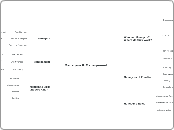Warehouse design and control: Framework and literature review
Warehouse design problems
Operational level
Short-term decisions
Assignment and control of personnel and equipment problems.
Tactical level
Medium-term decisions
Dimensions of resources
Number of employees
System sizes
Storage
Strategic level
Long-term decisions
Selection of types of storage systems
Process design
A review of warehousing models
Design oriented research
Warehouse design
Warehouse performance criteria
Order fulfillment quality
Response time
Storage capacity
Performance
Mixing volume and flexibility
Investment and operating costs
Warehouse design methods
Hierarchical level:
- Strategic
- Functional
- Operational.
Recognize the relationships between problems, to avoid suboptimal solutions
Solutions chosen at a higher level provide the limitations for lower-level design problems.
Warehouse characterizations
Warehouse processes
Shipping area
Orderpicking
The storage process
The receiving process
Warehouse resources
Material handling equipment for preparation
Computer system
Retrieval of items
Storage system
Storage unit
Warehouse organization
Allocation of tasks to personnel and
equipment are addressed by operator
Shipping process - orders and trucks are
assigned to the docks
Order preparation process - Selection areas
Storage process - particular location for each product
Reception process - Assignment of trucks to the docks
Process flow at the design stage









